1999. Norton, NY, 352 pages
Note the title, quoted from a passage on page 30 of this book, written by an author whose working thesis is that poor black Americans in the ghetto are almost completely cut off from mainstream society.
How much more mainstream can a brother get, than quoting a line from Star Trek! Star Trek and its descendent TV shows and movies constitute the single greatest white nerd intellectual cult in these United States, and, knowing their customer base, black teenagers back in 1999 used it as a drug branding gambit!
The Code of the Street is a thoughtfully composed ethnographic survey of black people who live along Germantown Avenue in Philadelphia, an eight mile stretch of road from the affluent Chestnut Hill area to the deep ghetto where the street ends “…in the midst of a leveled area about a block from the river and over-shadowed by the elevated interstate highway that now allows motorists to drive over North Philadelphia rather than through it—thereby ignoring its street life, its inhabitants, and its problems.”
And as the author decries a world [a world, that, mind you, has not a single poor white person in it] where inner city youth do not benefit from the hourly opportunity to stick-up, waylay, carjack, murder, rape and mob white and Asian motorist who should have solved the problems of Black Urban America decades ago—but I thought they did?
This passage, and the “Beam me up Scotty” quote from a drug dealer are the two aspects of Code of the Street that reoccur consistently:
1. The belief that black America is a child without agency that must be saved from itself by “the greater society”
2. The honest citing of gathered information by the author, who then goes on to ignore the implications and reverse his line of inquiry, or simply fails to draw a connection.
The body of the book is broken into a lesser and greater portion.
The lesser portion, is the author’s 34 page introduction, which is essentially his interpretation of the mass of information that he gathered, represented by the rest of the book and—what this author senses—is a mass of less printable but no less important information in his notes. As any good writer does, Elijah quotes his most quotable and most sympathetic interview subjects and leaves the less savory or less interesting folks to inform us in brief quotes from the peanut gallery that is his notebook, the very same approach I used for my early commercially published violence books.
The main body of the book is a well-indexed collection of interviews and observations on life along Germantown Avenue, with opinions mostly mild liberal left-leaning reaffirmations that everything in the black community that is wrong could be reversed if whites in the “greater society” would simply stop discriminating in undefinable ways and provide more and better jobs than drug dealing and menial occupations.
The 34 page introduction will be the focus of this review, as soon as we get the discrimination baby put to bed. Referred to as an underlying condition, and the source of the false belief that blacks are more violent than whites in the introduction, “white discrimination” is only cited a few times in the main body of the book:
1. Page 46, “the persistence of racial discrimination” with no supporting anecdotes, is cited in passing as a basic condition of black life
2. Page 59, Yvette, a young woman, mentions that her mother, who works in an all white department at her job, “feels” as if she is discriminated against and talks about her feeling all the time. So, discrimination is now a feeling on the job, not something that prevents a black woman from landing that job?
3. Pages 120-21, the job market for blacks being slight in “the trades” which it is, is blamed on white extended families looking out for one another! The implication is that the State must do something to further degrade the white extended family to put whites on the fatherless footing of blacks. For the record, in the Baltimore area, blacks are represented in the trades at a greater proportion than they are in the U.S. population. The unofficial figure I got today from a man who signs union books at a trade union was 15-25%, and he said, “I have noticed no on-the-job discrimination. We don’t care what color you are. It’s about money. What can you do for us? How can you make us money?”
4. Pages 181-82, the “decent daddy,’ a man who typically works two jobs, has a family, and is well connected with blacks and “members of the greater community” is extolled as the cornerstone of the formerly ascendant Black America. He was the man who could talk to white people and arrange for jobs, who would make peace among young men, etc. Elijah has this to say about his fate, as the “decent daddy” was nearly extinct in 1999, “Today the decent daddy’s role of sponsorship is being challenged by deindustrialization and the loss of those jobs in a racially conscious society in which black men’s talents and contributions are not always appreciated.” To this I would answer that we are in a “gender conscious” society, and that the contributions of white men are also no longer sought as they once were. Elijah, Sir, talk to a 53-year-old white man without a masters degree [if you know one] about where he fits in the postindustrial world?
A Delusional Jaunt Down Germantown Avenue
Even though the author describes the impression whites have that only blacks commit violent crimes—which are the facts as he related them—as being “oversimplified” he also quotes blacks about how you must watch your back every third step and carry a weapon in order to survive—and utterly fails to present an account of a white-on-black robbery—not one. He paints a clear picture of himself as a man that is proud to be a member of a race noted for its violent community life. This journey from the hill to the gutter is made with blinders on as a walk from a place of civility to a place with a code of aggression.
In The Land of Warily Strutting Peacocks
On pages 17, 18, 23, 25, 27, and 29 Elijah remarks on the keen attention to fashion among blacks of all classes, and how poorly dressed wealthy white men and middle class white men* are, how their cars are a cut below their houses. This social indictment is most pointed here, “…well-to-do white women, occasionally accompanied by a disheveled husband wearing worn tennis shoes and a moth-eaten sweater.”
*The poor white men, I suppose, if they exist, must wear animal skins and lair up in the sewers.
At this point, since the days of Booker T. Washington, when he was horrified to see elected black officials in Washington spending all of their money on ostentatious dress in imitation of the slave masters they had just been taken from, and putting on airs instead of doing work and educating themselves, an ancient African-American battle line is brought to light. This is the battle of values between the pimp-entertainer-minister in his thousand dollar suit and the 'chump” black man who works two jobs to provide for his family and lives in old worn clothes [which was my story, and the story of most white men in Baltimore].
Now, in the person of Elijah Anderson, we have Booker T. Washington’s academic descendent, having joined the GQ Clothing Brigade of strutting cavaliers. He is pleased as he cites how black youths involved in the drug trade dress crisply and are respected for it, and carry themselves in a way that suggests a violent mind and an ability to take care of themselves. Nowhere does Elijah make the connection between ostentatiously dressed criminals and wealthy men in worn clothes, anymore than he would understand that my grocery customer who wears old jeans and sweat shirts and owns 17 dump trucks and is worth many millions is successful for the very reason that he puts his business and family ahead of his own needs, least of all his vanity.
Since the modern impression is that all blacks once lived in rags and all whites once lived in the finest silks, I have permitted myself the following digression.
It has often been said that the American Civil War, which freed blacks from chattel slavery in 1864, was the final round of battle between the Roundheads [Puritans and later Yankees] and the cavaliers, or old aristocracy. The fact was, a tiny minority of well dressed cavaliers of the Confederate upper class fought and died in their finery at the head of their men like true cavaliers, while Grant and Sherman crunched numbers, called for sacrifice, and dressed like frumps, in the Yankee way, which brought victory.
What staved off victory for 4 long years was not so much Confederate leadership—which was better than its Union counterpart, and some Union Generals, like McClellan, were pretty ostentatious—but the best light infantry the world had ever seen, the Confederate soldier, who marched barefoot, dressed worse than a slave in homemade garments and ate less, and had never owned a slave himself, but was used to starving in a shack while the slaves fed the fat plantation masters. Robert E. Lee admitted that he was no great general after Gettysburg, when he pointed out that he had asked the impossible of his men one too many times. Lee’s way was to put his men in a shit position knowing that they would rise to the occasion. He believed in them and that’s why they loved him and died for him.
The Civil War was fought between poor white men, one side commanded by cavaliers, the other side by Yankees, and the black men freed by this slaughter have, after more than a century, decided that the slave owner dressed in his finery, jealous of his masculine image to the point of fighting, and entitled to the produce of another man’s labor—perhaps with a bucket of chicken to offer—is the model of manhood to be admired, not the man that makes and provides and then steps aside for the women and children.
It is astounding that this award winning professor cannot see any of these contradictions, and they are not the most glaring among the array he misses.
Elijah sums up his unintentional exposition of the modern Yankee-Cavalier juxtaposition with, “A common aspiration of the poorer girls in these neighborhoods is to go to beauty school and become cosmetologists.”
A Fatherless World
On pages 27-29 Elijah gives a brief overview of familial decay in the black community.
Fathers are absent, and are not held to blame, but silently excused, as if to ask of a father that he be a husband is an unnatural sin of the most vile sort.
Single mothers are pictured as heroically forging on, not to blame for having multiple children out of wedlock by different men, having no control over their own reproduction, and of having been tricked into pregnancy by slick talking boys.
The families—such as they are, explained as informal kin networks—of children in the drug trade are given a pass for taking money from drug dealers in return for their children working in the drug trade, placing money on the same high ground that Abraham held as God’s place. No connection is made between materialism at any costs and money no matter the deed as being both the center line and the fault line of the black community. This dynamic is set a page over from the family dislike and distrust of police. But no connection is made that the black community might hate the police because of drug enforcement. It is rather suggested that the police are not trusted because they do not come when called. The author does not piece together the obvious that they do not come when called because the last time they were called they ran into a stone wall.
Code of the Street is a dozen missed opportunities for illumination wrapped in one fairy tale blanket—faceless, undocumented, unsupported, implicit white racism.
Flash Mob Flash Point
On page 20, 23, 34 Elijah points at the smoking gun of our current black-on-white mob violence, which is preceded by other notes on the middle class black community segregating itself from the lower class blacks, just as upper class whites do from lower class whites, but seemingly to different effect, for poor whites do not launch mob attacks on blacks. Nor do middle class white youth mob attack poor blacks as middle class black youth mob attack poor whites habitually.
The middle class black youth on Germantown Avenue gather at the basketball courts and dress and behave the same as the criminal youth. So, even as the parents escape the ghetto, their children, in search of their vaunted martyr roots, socialize with the lowest criminals and funnel ghetto morality and negative standards up into the middle class.
Elijah describes all of the working parts of this hip hop automaton but does not understand that it moves, apparently because he’s at home in his cozy digs when it walks the world that created it.
The Latino Castle
On page 31 Elijah moves into the Spanish speaking section of Germantown Avenue and writes:
“…gunshot marks are evident on some of the buildings. The black ghetto here gives way to the Hispanic ghetto. The faces are different, but the behavior is the same. Yet in the midst of this desolation stands a newly built gated community in the Spanish style.”
The second half of the first sentence describes the shot-up section of the black ghetto, beyond which the blacks do not go. Could it have anything to do with the bullet marks?
Even as Elijah sticks to the no culture doctrine of sociology that implies that the behavioral differences between groups is based only on income, and then erroneously states that the Hispanics behave in the exact same manner as his study population—even though he has no evidence for the identical nature of poor blacks and Hispanics, and likely did not interview any Latinos because they generally hate blacks—he goes on to correct his prejudicial leftist statement by writing about the recent Hispanic effort to build a middle class island in a ghetto! You can trust Elijah to refute himself on every page.
Okay, Elijah, The brothers got stopped in a few gun fights by the Latin Kings, whose older brothers own a construction company which will not hire blacks, and are building a community instead of chasing rich white people out Germantown Avenue imitating long dead plantation owners with their gaudy costumes and swaggering airs.
This Reader’s Interpretation of Code of the Street
The Code of the Street offers all of the raw information one needs to understand how the black underclass in American cities has become a predatory mob, but, mildly disagrees with its own findings on weary doctrinal ground. 1999 was a few years before black on white mob violence became the rage across urban America. So this book stands as a precursor, the testament of a dead age that gave stillbirth to this mutant baby of an era. It is clear that the author has been so heavily indoctrinated into the leftist school of sociology that he is incapable of seeing the truth. However, his crippled worldview did not prevent him from a presentation of the facts about a world, where there are no poor white people—none.
Black and white American are not two separate cultures, but one festering mongrel population of materialistic degenerates splitting into communities along class lines and then imitating those aspects of the other socio-economic groups based on the perceived social status accruing to the owner of this look, of that car, of this house, and that outfit.
It is a society that deserves to be wiped from the face of the earth by a tidal wave of unprecedented violence, hopefully to be replaced by something less toxic to the soul. Perhaps, when this teaming clusterfuck of pimps, whores, drug dealers, zombies, and apologists is finally ploughed under then a Catholic Latino nation, a white Christian nation, or an Islamic State—or perhaps all three—will found a real society on the ruins of that cancerous British trading post that, on a just planet, would have been put to the torch in 1609.


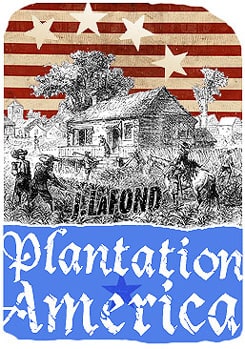
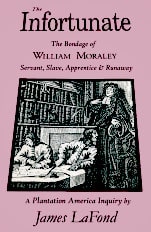

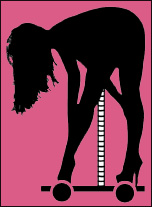

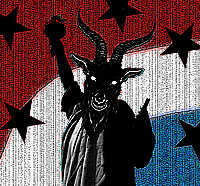
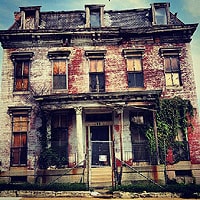
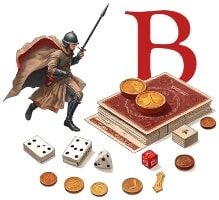

Don't hold back, tell us how you really feel Jim!!
Okay, if you insist, Bro.
Powhatan should have filled John Smith's pinnace with English heads, staked John's head on the mast, and sent the last English sailor back to England in the thing, and maid his brat daughter watch.
Thanks for checking in Winston.
Your trusted foe, Joe Stalin.
Yeahhhh!!!! Testify my brother!!